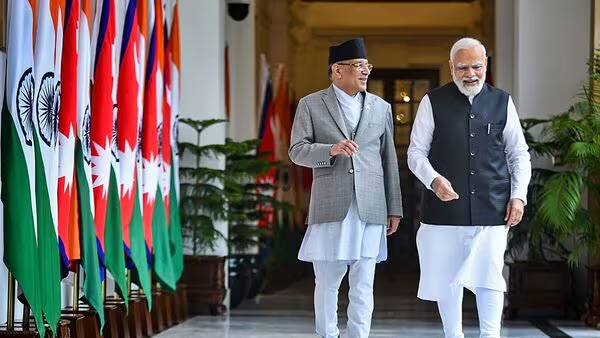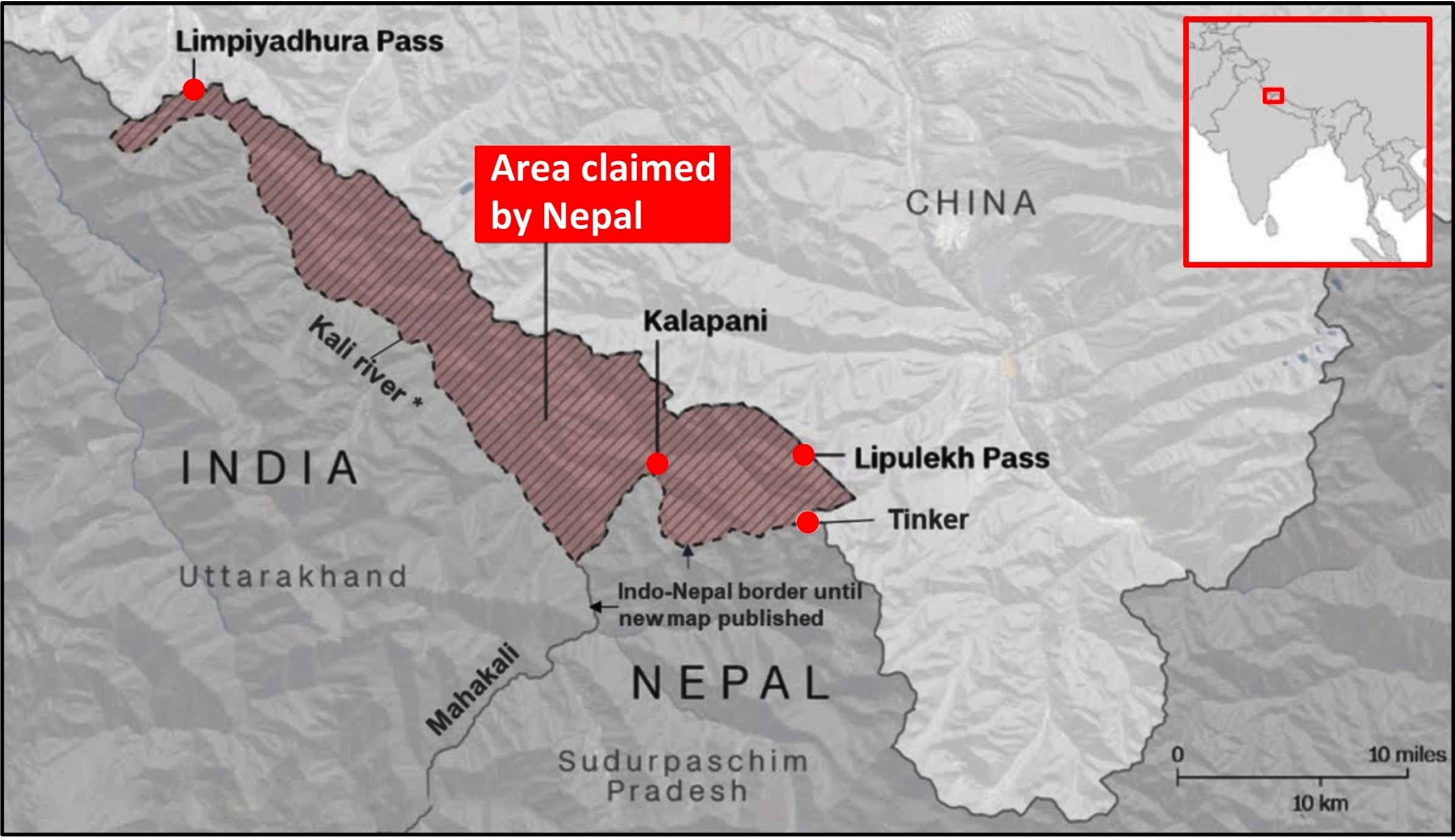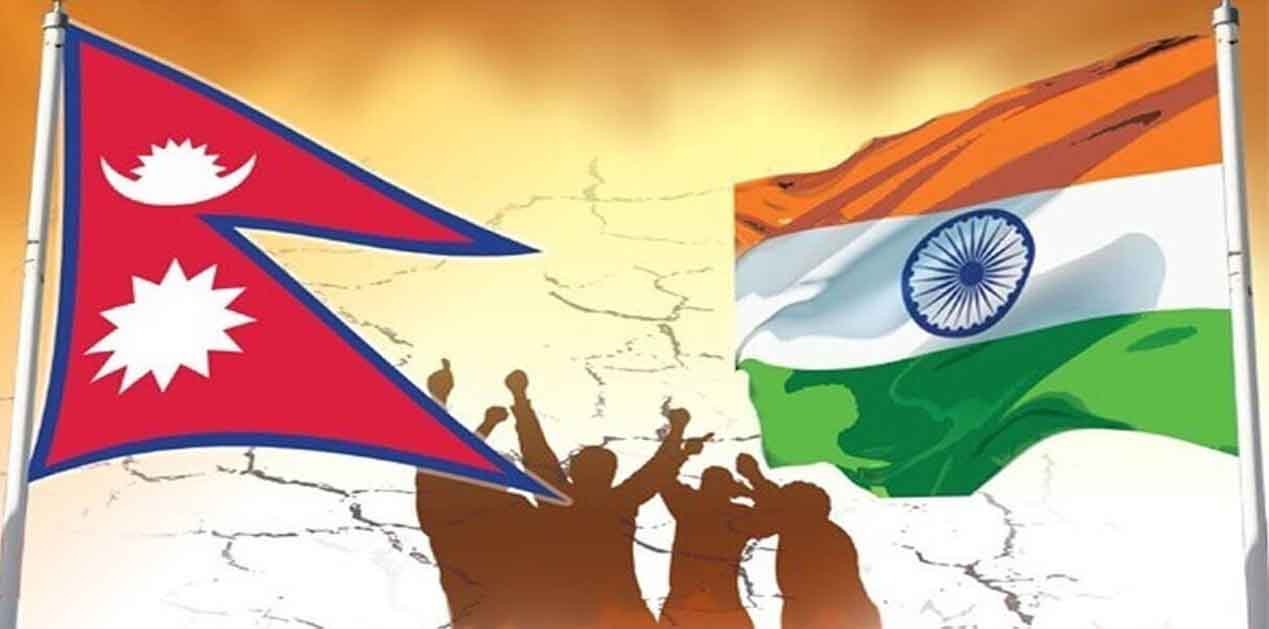Nepal to Print New Banknotes Claiming Disputed Lands. Will This Spark a New India-Nepal Conflict?
Nepal is printing new banknotes carrying an updated map to include disputed territories it has claimed, and so has India-namely, Kalapani, Lipulekh, and Limpiyadhura. This can be the action that heightens tensions between these two nations and shall make further diplomatic efforts to solve this long-standing border dispute more complex.

The Nepal Rashtra Bank is going to print new banknotes and distribute them within a period of one year, showing the area of Kalapani, Lipulekh, and Limpiyadhura in the updated map. The decision comes after a resolution passed by the cabinet of Nepal, led by its prime minister Pushpa Kamal Dahal, better known as Prachanda, on May 3, 2024.
It represents a very important point, at least for Nepal, in that disputed border area between Nepal and India. It is therefore a symbolic gesture pregnant with portent regarding the future of Nepal-India relations, regional geopolitics, and even national identity itself in Nepal.
Brief History of the Dispute
The Sugauli Treaty, 1815
The Nepal-India territorial dispute has its genesis in the early 19th century with the end of the Anglo-Nepal War of 1814-1816. The war was concluded with the signing of the Sugauli Treaty in 1815 between the British East India Company and the then Kingdom of Nepal. Thus, Nepal ceded a sizable portion of western Nepal to British India. This treaty fixed the Mahakali, popularly known as the Kali River as the western boundary of Nepal without specifically demarcating the same and providing any declared map as to its source.
Dispute over the Kali River
It is the ambiguity on this issue of the Kali River origin that has been the crucial point of controversy nowadays. While Nepal insists that this river originates from Limpiyadhura, India claims its source is further southeast at Kalapani. The two countries came up with territorial claims between those two points, including Kalapani, Lipulekh, and Limpiyadhura, based on their respective conflicting views of the origin of the river. This created an unresolved tension for more than two centuries.
Nepal Revised Map

During the tenure of Prime Minister K.P. Sharma Oli, Nepal, in May 2020, officially endorsed a new political map in which Kalapani, Lipulekh, and Limpiyadhura were incorporated as Nepali territory. This map received endorsement from the parliament of Nepal, and soon the revised map was incorporated into all official documents. But this action was vehemently opposed by India, arguing that these regions form a part of its territory. This, however, did not deter Nepal from continuing to claim the areas and exercise its sovereignty over those spots despite India’s objections.
Recent Developments and Printing of New Banknotes
New Map to Feature on Political Decision
After years of high voltage, nationally loaded sentiment in Nepal, the revised map will feature on Nepalese currency notes. In a strong, bold declaration of Nepal’s territorial claims, the Cabinet, under the leadership of Prime Minister Prachanda, passed an official resolution to proceed with the redesigning of the nation’s banknotes, including the revised map, on May 3, 2024. This is no ordinary symbolic act; rather, it is representative of a sequel in Nepal’s mounting, assertive posturing about its sovereignty and borders.
Role of Nepal Rashtra Bank
According to Dilliram Pokharel, a joint spokesperson for the Nepal Rashtra Bank, the printing of the new banknotes has already been started and is likely to be completed in six months or one year. Though the central bank has not commented officially on the details of the designs for the banknotes, the inclusion of disputed territories in the imagery on the currency is very likely to carry heavyweight political and diplomatic implications.
The printing of the new banknotes thus follows a recent trend within Nepal to embed the revised map into different official state symbols, thereby solidifying the country’s claim to the disputed regions on a global platform.
Contending Issues in Relations between Nepal and India
Diplomatic Tensions
The Nepal-India border stretches more than 1,850 kilometers and connects the two countries with deep historical, cultural, and economic ties. However, the dispute over the border areas of Kalapani, Lipulekh, and Limpiyadhura has emerged as one of the most contentious issues between the two countries in recent times. Printing banknotes depicting these disputed areas may further aggravate these tensions.
India views the inclusion of these disputed territories in Nepal’s currency as a direct challenge to its sovereignty and a step that further provokes it, which diminishes any hope for the diplomatic resolution of the border dispute. This will add fuel to the already strained bilateral relationship between the countries in recent times. India has been repeating that Kalapani, Lipulekh, and Limpiyadhura belong to it, while refusing those claims of Nepal with a basis on historical documents and maps considered authoritative.
Possible Impact on Bilateral Relations
The inclusion of these disputed territories by Chhau in the Nepalese banknotes makes the dispute at a later time negotiable. It would provide legitimacy to the disputed territories in the currency system, which would be viewed by India as a unilateral act that closes off the option of compromise. That could lead to a further diplomatic standoff, with both countries entrenched in their respective positions.
Consequences could also be economic and social, besides being merely diplomatic. Nepal is dependent on trade with India, and any decline in relations might affect not only bilateral commerce but also transit rights and movement of people across the border. Any tension between the two governments is likely to spill over to the citizens of the two countries, particularly in border areas where the frequent crossing for work, trade, and social reasons is quite common.
Domestic Political Considerations

Nationalism and Political Support
The move to depict disputed territories on its currency by Nepal has been closely related to its domestic political dynamics. While nationalism has remained a strong force in Nepalese politics, political leaders have often used the territorial dispute issue with India as an appeal for public support. This issue of the disputed territories has become symbolic of Nepalese sovereignty and a question of national pride.
Printing new banknotes with the revised map is bound to win enthusiastic popular support from large sections of Nepalese, who believe that Kalapani, Lipulekh and Limpiyadhura are Nepal’s rightfully. The decision will also prop up the nationalist credentials of the government, and this may indeed be a boost for the political consolidation of Prime Minister Prachanda.
Risks for the Government
But while the move is likely to be popular at home, it’s a gamble with its own set of risks. The decision to formalize Nepal’s claims to disputed territories on its currency will reduce the government’s flexibility in future negotiations with India. If the two sides ever do reach a peaceful resolution to the border dispute, Nepal may find it politically impossible to back down from its claims, having celebrated them in such an overt and lasting manner.
The move could also entail backlash from opposition parties in Nepal. Certain political factions may insinuate that by doing so, the government in Nepal has compromised the long-term relations between Nepal and India for short-term political gains. Others might accuse the government of using the territorial dispute to divert the attention of its people from the country’s economic ills and bad governance.
Future Consequences and Scenarios
Geopolitical Dynamics in South Asia
Kalapani, Lipulekh, and Limpiyadhura are pieces of disputed land whose management has implications other than that between Nepal and India alone. Growing closeness between Nepal and China, particularly regarding the BRI project proposed by China, has sent ripples of apprehension about Chinese influence in Nepal through its southern border.
This increasing engagement on the part of China with infrastructure projects, along with political influence in Nepal, can be construed as an effort to undermine the influence that India has enjoyed in this region. The question of territory between Nepal and India has all the makings of a potential flashpoint within the larger strategic competition in South Asia between India and China. Further, if it stays closer to China, then the relationship with India might continue to deteriorate and heighten regional instability.
Economic Implications for Nepal

Another major implication of printing new banknotes with a revised map may be economic in relation to Nepal. If the diplomatic tension with India worsens, then it may shake the Nepalese economy, since it relies heavily on its southern neighbor for trade purposes. India is the largest trading partner of Nepal, and any jolt in the cross-border trade will lead to or is bound to hamper the economic growth of Nepal.
Also, if the border dispute is not settled and relations between these two nations continue to deteriorate further, it may also eventually send foreign investment in Nepal packing, since investors would feel that the nation was falling into a risk category of political and economic instability. Under such a scenario, the economy of Nepal could suffer, especially if it were unable to find alternative trade and investment partners.
Resolution Paths
Notwithstanding the tension created, there are possible ways of peaceful resolution of the dispute. In the past, both Nepal and India demonstrated a willingness for dialogue, and diplomatic negotiation remains the most feasible option for sorting out the border issue. But negotiations can succeed provided both countries demonstrate flexibility and come forward with a compromising attitude.
This might be one plausible solution where the administration of those areas would be jointly carried out. Both would agree to some sort of joint sovereignty over the disputed areas. Through the mediation of this proposal, both Nepal and India can claim the land without extending the tension between these two countries. Arbitration by an international body such as the United Nations or the International Court of Justice is also another alternative. It needs, however, the assent of both countries.
Nepal’s move to print new banknotes with the controversial territories of Kalapani, Lipulekh, and Limpiyadhura stands as a severe jacking up in its territorial row with India. While this move may be popular domestically and strengthens the government’s nationalist credentials, it also carries the risks of exacerbating diplomatic tensions with India and burgeoning negotiations.
The issue of the territorial dispute is very historical, and for the solution, it needs constructive dialogue from both countries and also a will to compromise. Meanwhile, the broader geopolitical context-namely Nepal’s growing ties with China-adds a new layer of complexity to the issue.
This sensitive issue in the next few months will be watched by the world on how Nepal and India will navigate. What a gloomy future that is, but what is clear is that the move to include the disputed territories in Nepalese currency will have long-term repercussions on the relations between the two neighbouring countries.




